Introduction
In the rapidly evolving business landscape, companies often find themselves at a crossroads, requiring strategic transformations to stay competitive and resilient. Business restructuring offers a comprehensive solution, encompassing operational, financial, and organizational changes aimed at enhancing productivity, financial health, and alignment with long-term goals. Whether it's leveraging technology to streamline processes, reorganizing debt to stabilize finances, or redefining company structures to mitigate uncertainties, restructuring can significantly improve a company's ability to navigate financial distress and market challenges.
However, this transformative journey is fraught with complexities and requires careful planning, clear communication, and robust execution to ensure a smooth transition and sustainable success. This article delves into the multifaceted nature of business restructuring, exploring its various types, strategic reasons, and essential steps, while providing actionable insights for CFOs to effectively manage and lead their organizations through these critical changes.
Types of Business Restructuring
Business reorganization includes different methods, such as operational, economic, and organizational changes. Operational reorganization aims to enhance productivity by simplifying workflows and improving effectiveness. For instance, leveraging technological solutions, as seen in the case of the Travel Charme Strandhotel Bansin, can streamline operations and improve service delivery, leading to increased customer satisfaction.
Monetary reorganization emphasizes rearranging a company's obligations and ownership to enhance economic well-being and stability. This method often entails negotiations with creditors to lower debt levels, enhance cash flow, and optimize the capital structure. 'An example of successful financial reorganization can be seen in the strategic shifts made by Dow Jones in 2017, where the company realigned its operations to focus on a more digitally-oriented approach, thereby modernizing its editorial processes and enhancing operational efficiency.'.
'Organizational realignment involves redefining company structures, roles, and responsibilities to better align with business objectives.'. This can alleviate the uncertainties and anxieties often linked to organizational changes. Effective communication strategies, as evidenced by 66% of successful company reorganizations, play a crucial role in easing transitions and maintaining employee morale.
Implementing these thorough reorganization tactics can greatly improve a company's capacity to manage economic challenges, optimize operations, and align organizational frameworks with long-term business objectives.
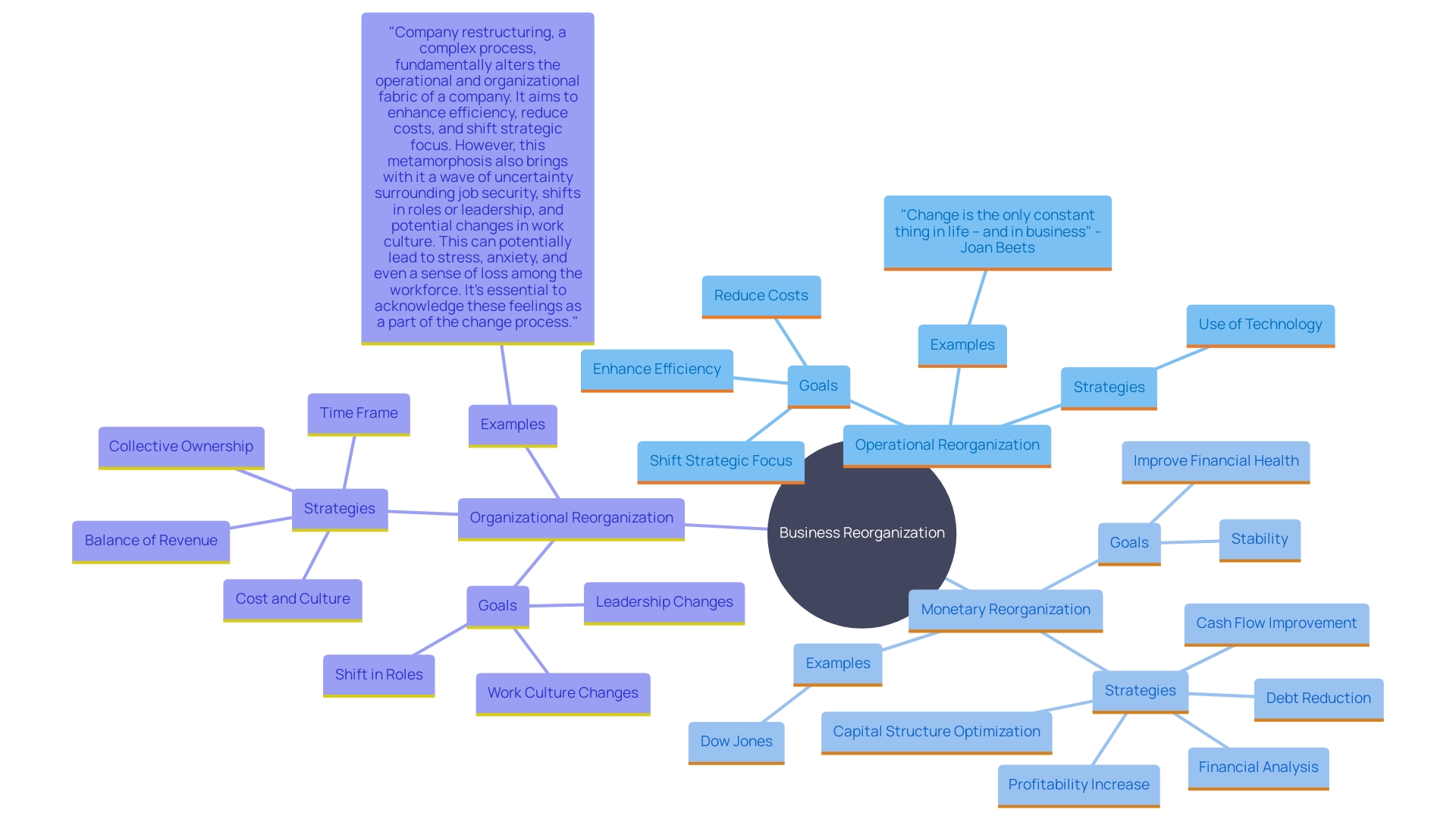
Reasons for Business Restructuring
Businesses engage in reorganizing for numerous strategic motives, such as falling sales, increased rivalry, financial troubles, or changes in market circumstances. The process aims to enhance operational efficiency, reduce costs, and realign strategic focus. However, reorganizing is not without its challenges. For instance, Joan Beets emphasized, "Change is the only constant thing in life – and in business," underscoring the inherent instability that reorganization brings.
In the context of evolving consumer demands and technological advancements, businesses must be agile and responsive. This often means reconfiguring operations to stay competitive. The McKinsey Global Survey highlighted that during organizational changes, 38% of employees felt distracted in their daily tasks, while growth initiatives stalled. To mitigate such issues, 66% of successful reorganizations had clear information-sharing plans for all stakeholders. Clear communication is essential to ensure that employees grasp the reasons behind the reorganization and its intended outcomes.
Furthermore, mergers and acquisitions can require reorganization to integrate operations effectively and achieve synergies. However, poor execution of these plans can lead to value erosion instead of creation. This underscores the importance of having a structured process for assessing, planning, and implementing changes, focusing on team and customer engagement to support strong execution. In summary, while reorganizing is essential for adapting to market dynamics, it requires careful planning and communication to ensure a smooth transition and minimize disruptions.

Steps in Business Restructuring Planning
Effective restructuring requires a systematic approach grounded in robust frameworks. The process begins with a comprehensive assessment of the current economic situation. A detailed review of financial statements, such as the balance sheet, income statement, and cash flow statement, is crucial to pinpoint areas needing immediate attention. For instance, identifying underperforming products can help decide whether to discontinue them or improve their sales.
Next, setting clear objectives and defining the scope of the restructuring is vital. This involves establishing key performance indicators and aligning them with the organization's strategic goals. Developing a detailed plan that outlines necessary changes, timelines, and resource allocation is essential. 'This plan should take into account various elements such as risks, mitigation strategies, and ongoing enhancement methods.'.
Involving key stakeholders during the entire journey guarantees support and reduces opposition to change. Clear communication assists in managing uncertainties and anxieties that usually come with organizational changes. As Joan Beets aptly noted, 'Change is the only constant thing in life – and in business.' Acknowledging and managing the workforce's concerns about job security, shifts in roles, and potential changes in work culture is critical for a smooth transition.
Real-world examples, such as TBC Bank’s transformation from a large-scale operation to a flexible, continuous delivery model, underscore the importance of a well-structured approach. By leveraging frameworks, organizations can systematically analyze, develop, and implement solutions, ensuring consistency and alignment with their principles and goals.
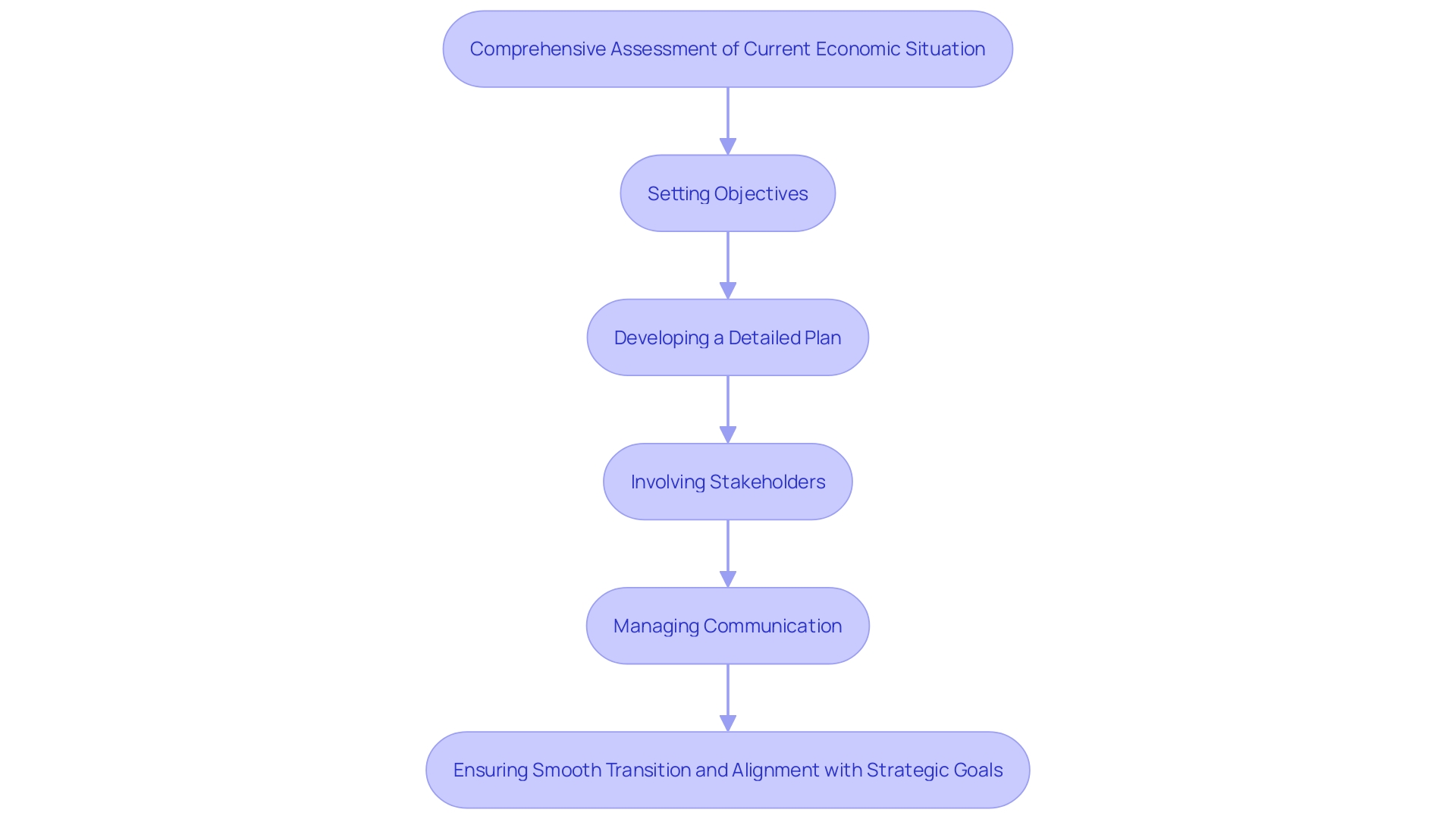
Key Components of a Business Restructuring Process
An effective reorganization process depends on several essential elements: thorough monetary evaluation, stakeholder involvement, and efficient change management techniques. Conducting a thorough financial assessment involves analyzing financial statements—including balance sheets, income statements, and cash flow statements—to identify root causes of financial distress, such as high debt levels, low profitability, or liquidity issues. This step is essential for pinpointing areas for cost reduction and enhancing cash flow.
Stakeholder engagement is another cornerstone of successful reorganization. Gaining the backing of stakeholders, such as creditors and employees, by aligning their interests with the goals of transformation can significantly improve the effort. For example, based on a McKinsey Global Survey, 66% of successful company reorganizations had established clear messaging plans for all internal and external stakeholders, highlighting the significance of open dialogue.
Effective change management strategies are vital for facilitating smooth transitions. These strategies should address employee concerns and maintain morale during the reorganization process. As Joan Beets noted, "Change is the only constant thing in life – and in business." It's crucial to acknowledge the stress and anxiety that may accompany changes and to develop proactive communication strategies to mitigate these effects. The reorganization of Dow Jones and The Wall Street Journal in 2017 serves as a notable example, where a strategic shift towards a more digitally-oriented approach required the creation of new job categories and a realignment of roles, helping to modernize operations and enhance efficiency.
In summary, by combining these essential elements—financial evaluation, stakeholder involvement, and change management—organizations can manage transformations more effectively, ultimately enhancing financial stability and operational efficiency.
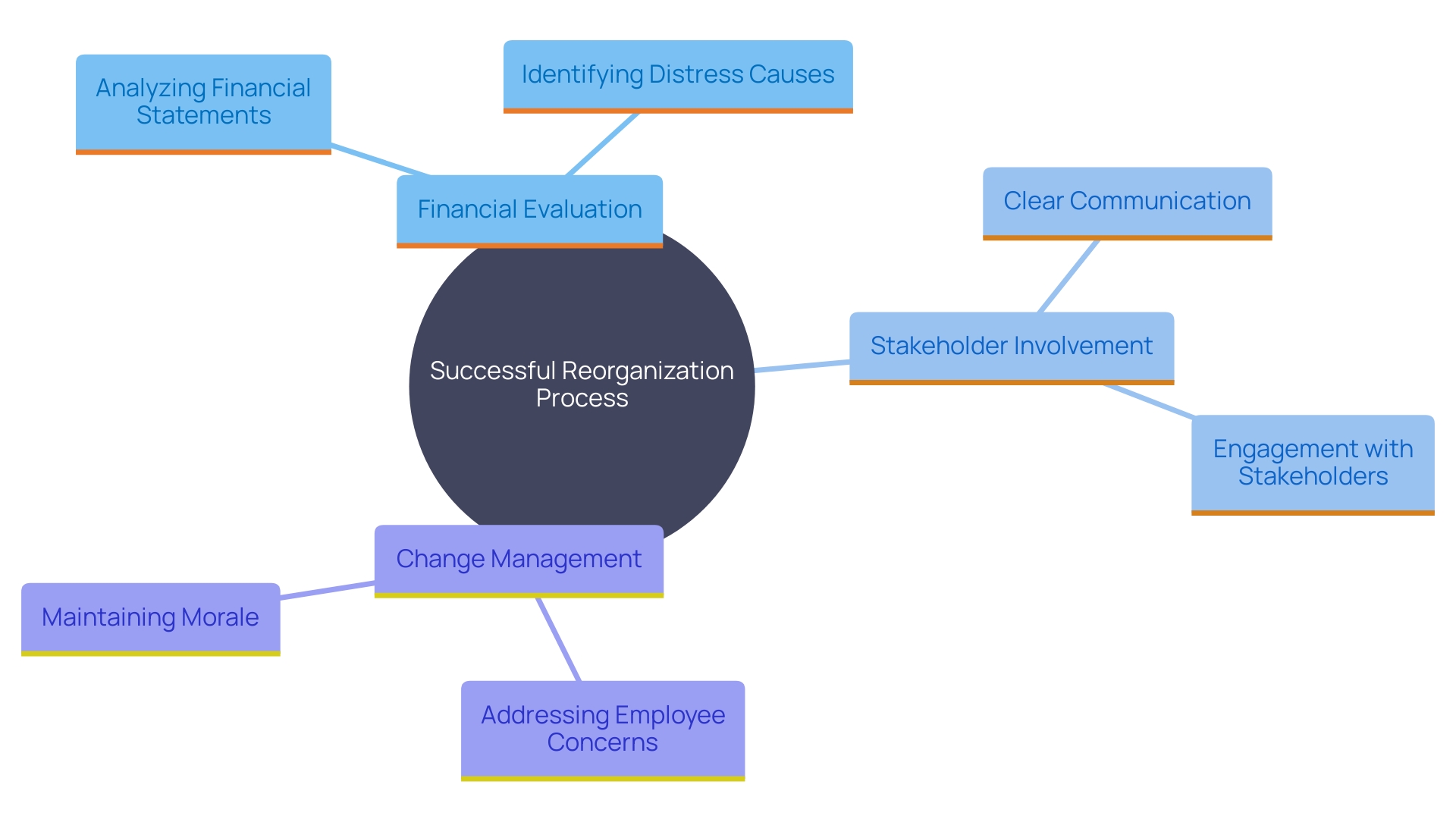
Strategic Planning and Execution
Strategic planning and execution are paramount for successful reorganization efforts. This demands prioritizing initiatives based on their potential impact and feasibility. Setting clear, measurable goals and establishing performance metrics to track progress is critical for ensuring accountability. Consistent interaction with stakeholders and regular updates on the reorganization process are crucial to uphold transparency and trust.
As Joan Beets wisely noted, 'Change is the only constant thing in life – and in business.' This resonates deeply within the transformation context, where altering the operational and organizational fabric aims to enhance efficiency, reduce costs, and shift strategic focus. However, this transformation can bring about uncertainty and stress among the workforce.
Reflecting on the 2009 Annual Drucker Forum, which coincided with a severe global economic crisis, it's evident that organizations must know their strengths to navigate disruptions. Drucker emphasized, 'A person can perform only from strength.' Companies must leverage their core strengths to weather storms, adjust strategies, and emerge stronger.
Case in point, TBC Bank's journey from large-scale operations to a flexible, continuous delivery model underscores the importance of readiness and adaptability. Their mission to improve time-to-market for digital products exemplifies the need for robust governance structures and leadership to drive business building as a way of life.
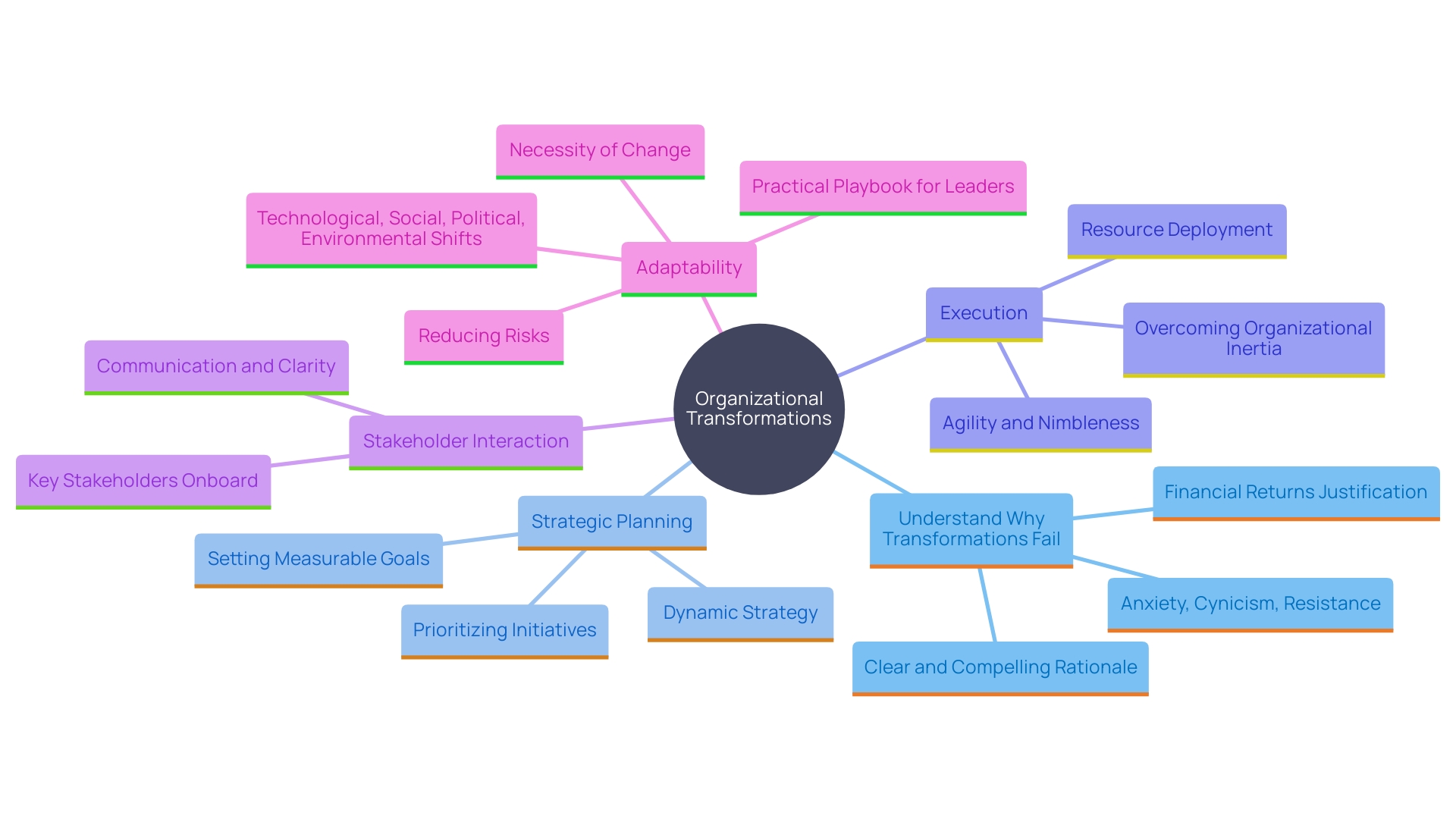
Engaging Advisors and Stakeholders
Involving outside consultants can be a crucial step during a reorganization period, offering essential knowledge in monetary assessment, legal aspects, and operational enhancements. For instance, consulting firms have reported a 56% increase in financial performance improvement engagements since 2020, demonstrating their vital role in enhancing efficiency and reducing costs. 'The Joan Beets Company case underscores the significance of addressing the emotional impact on employees during organizational changes, recognizing the stress and anxiety that can accompany such substantial transitions.'. Moreover, involving key stakeholders such as employees, creditors, and investors is essential for fostering collaboration and addressing concerns. As Joan Beets aptly stated, "Change is the only constant thing in life – and in business," emphasizing the need to manage the human aspect of organizational transformation effectively.
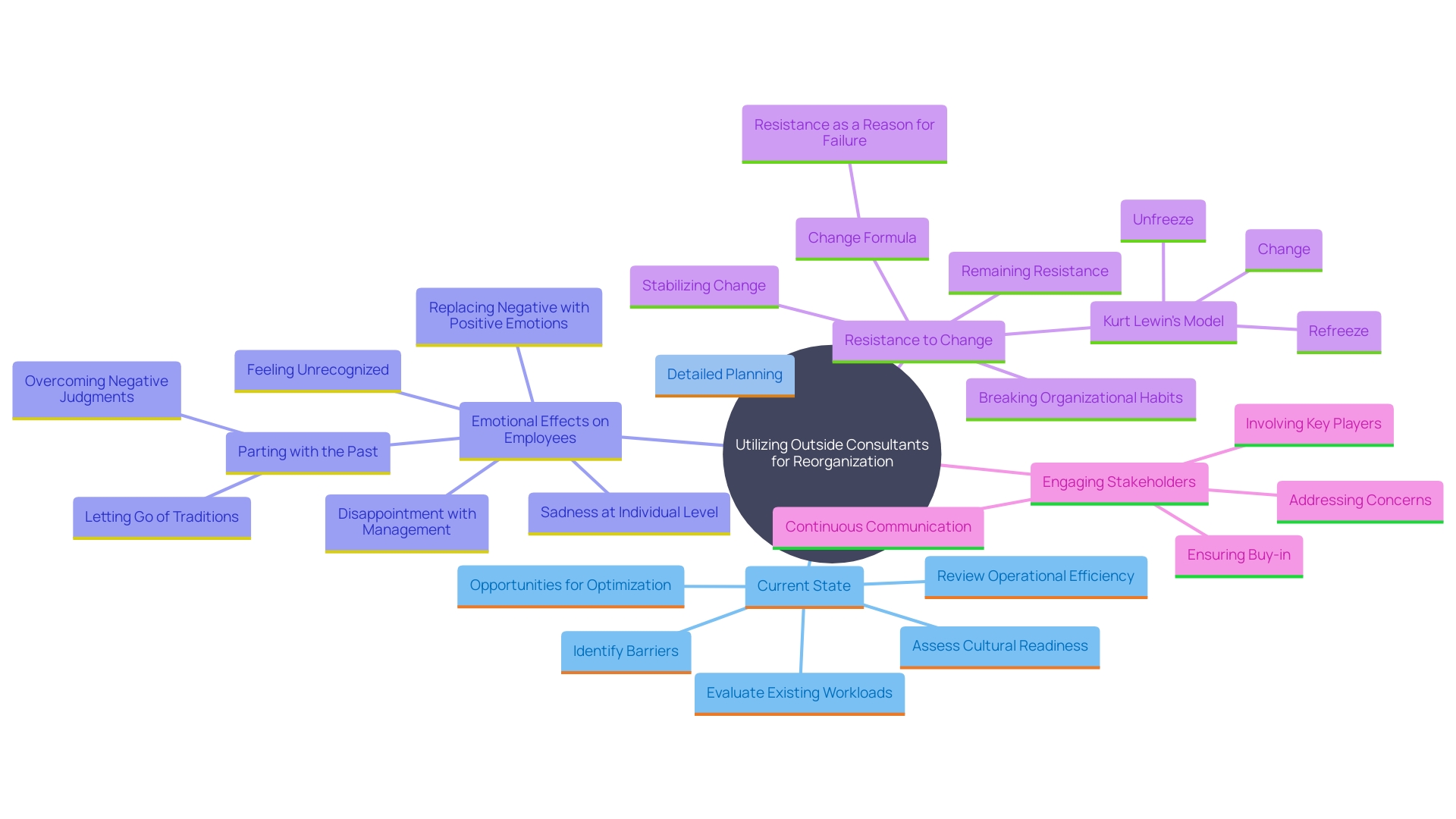
Creating a Clear and Detailed Plan
A clear and detailed reorganization plan acts as a roadmap for successful implementation. This comprehensive plan should outline specific actions, resource allocations, timelines, and responsible parties. Contingency plans to address potential challenges that may emerge during execution are also essential. Regular reviews and adjustments ensure the plan remains adaptable in a dynamic environment.
'As per a McKinsey Global Survey, 66% of effective corporate reorganizations had established a clear communication strategy for all stakeholders, emphasizing the crucial importance of open communication during the process.'. Staff members have the right to comprehend the reasons for organizational changes and the anticipated results, promoting shared understanding and alleviating worry.
Restructuring fundamentally alters the operational and organizational fabric of a company, aiming to enhance efficiency, reduce costs, and shift strategic focus. However, it also brings uncertainty regarding job security, shifts in roles, and potential changes in work culture. Recognizing these emotions as part of the transformation is essential, as highlighted by Joan Beets: "Change is the only constant thing in life – and in business." This metamorphosis, thought challenging, is necessary for adapting to an ever-changing business landscape.
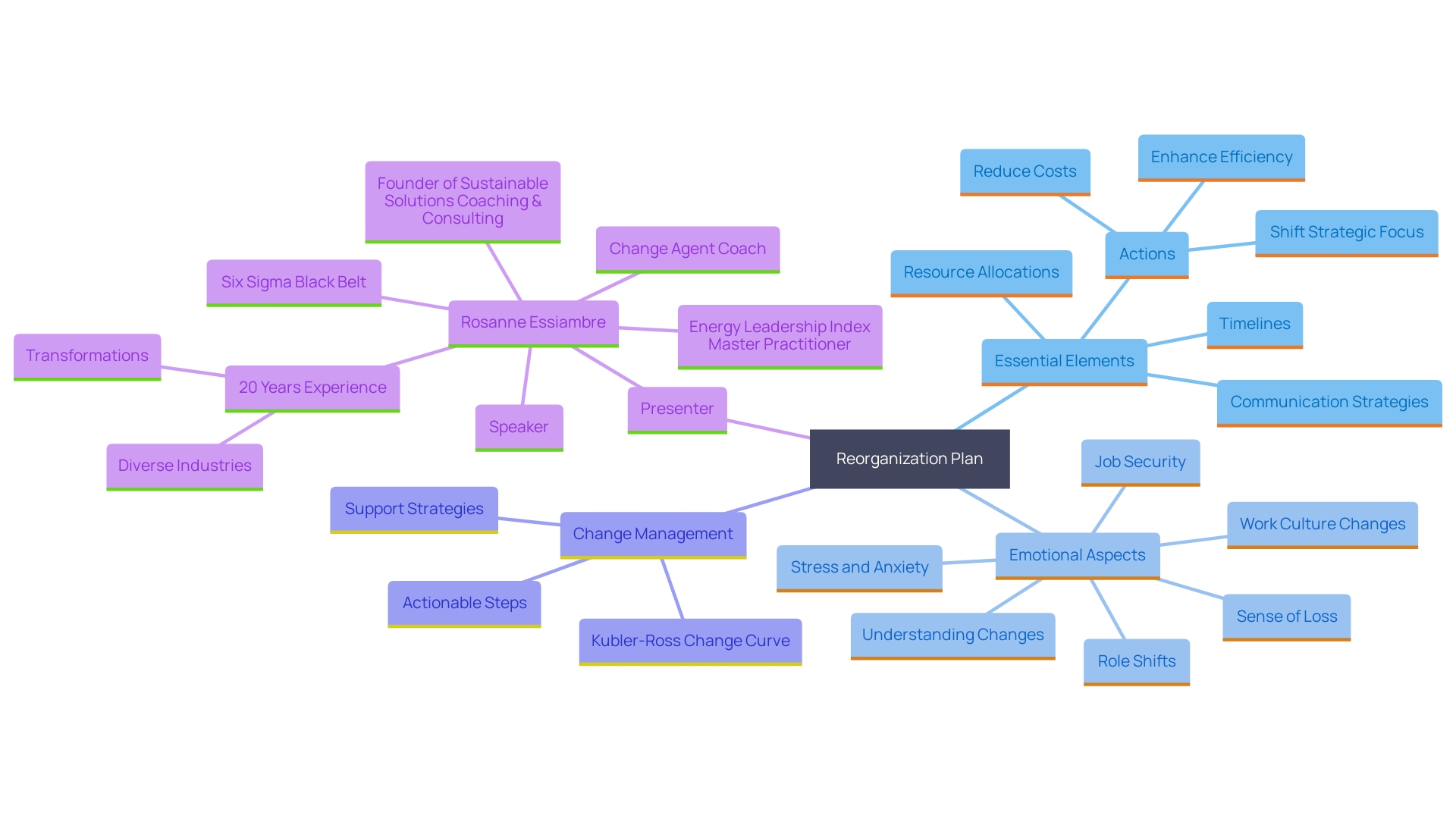
Monitoring and Sharing Success
Observing the results of organizational changes is essential for assessing their effectiveness and making required modifications. Establishing key performance indicators (KPIs) provides a clear framework for tracking progress against set goals. For example, a McKinsey Global Survey emphasized that 66% of successful company reorganizations had created a clear communication plan for all stakeholders, highlighting the significance of transparency in the realignment. Sharing successes with stakeholders not only fosters a sense of achievement but also builds confidence in the restructuring process, paving the way for future initiatives. This approach aligns with the broader strategy of leveraging data to empower informed decision-making and ensure continuous improvement.
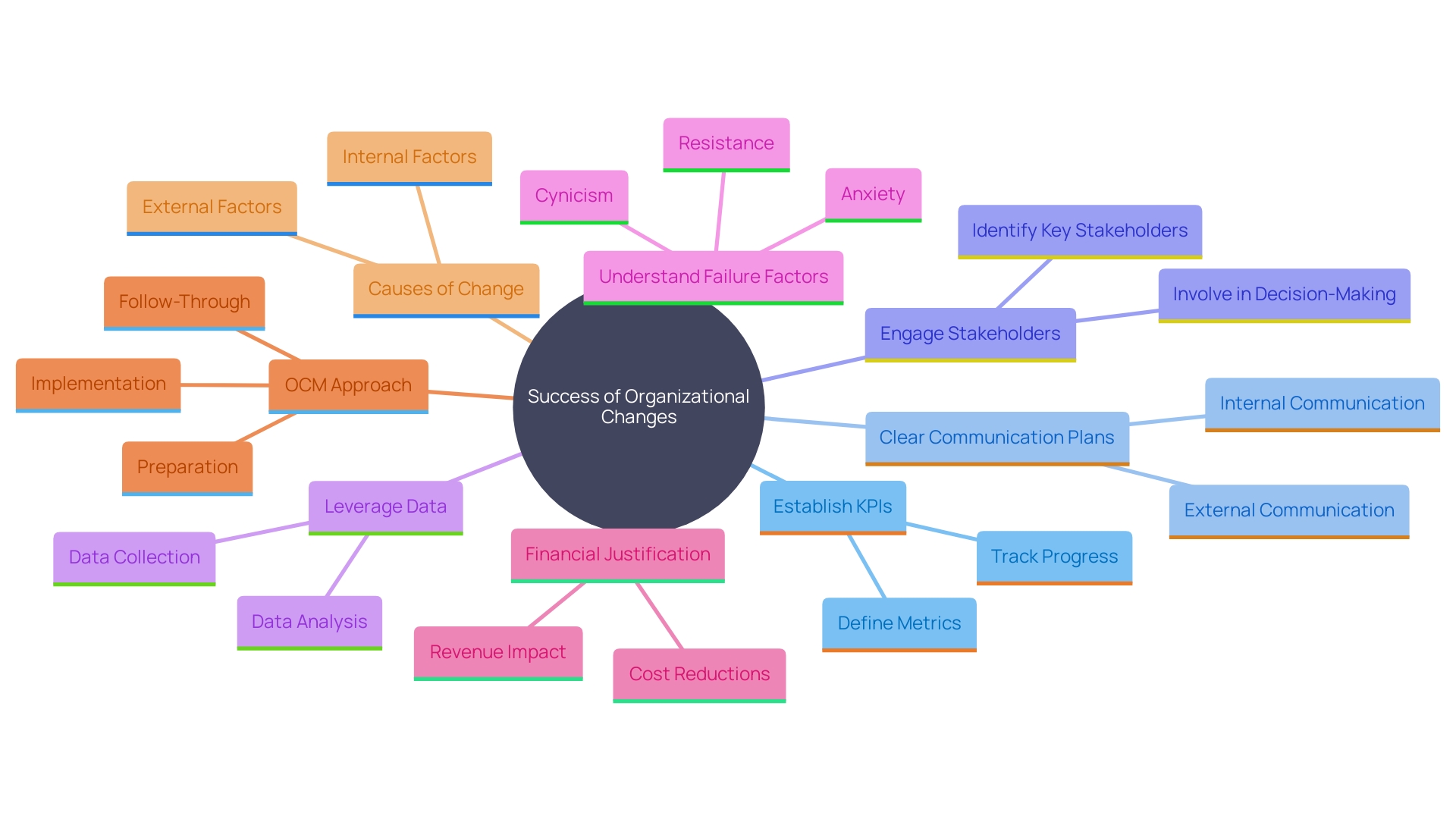
Conclusion
Business restructuring is a multifaceted and strategic approach essential for companies aiming to thrive in a competitive landscape. By understanding the various types of restructuring—operational, financial, and organizational—business leaders can implement tailored strategies that enhance productivity, stabilize finances, and align structures with long-term objectives. Each type plays a vital role in refining processes, optimizing capital structures, and redefining roles to create a more resilient organization.
The reasons for undertaking restructuring are diverse, ranging from declining sales to shifts in market conditions. While the challenges are significant, including employee distractions and potential morale issues, transparent communication and a structured approach can mitigate these risks. Engaging stakeholders throughout the process ensures buy-in and fosters a collaborative environment, crucial for navigating the complexities of transformation.
A systematic planning approach is critical to the success of restructuring efforts. This involves thorough financial assessments, setting clear objectives, and developing detailed plans. Key components, such as stakeholder engagement and effective change management, are fundamental in fostering a smooth transition and maintaining employee morale.
Furthermore, engaging external advisors can provide valuable insights and expertise, enhancing the effectiveness of the restructuring process.
Ultimately, successful restructuring hinges on strategic planning, execution, and ongoing monitoring. Establishing key performance indicators allows organizations to track progress and make necessary adjustments. By sharing successes and maintaining open lines of communication, companies can build confidence among stakeholders and pave the way for future initiatives.
Embracing change as a constant in the business environment positions organizations to adapt and thrive amidst uncertainty.




